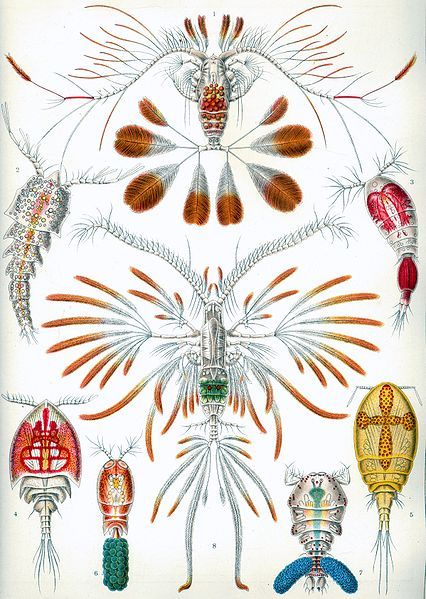
Is New York City's water kosher? That depends on your perspective -- after all, it is swimming with tiny, harmless shrimplike organisms called copepods.
Earlier this summer, an enterprising blogger added a common laboratory stain to New York City tap water, found a few copepods, and uploaded the photos to Reddit. A popular technology blog got a hold of it, and before you could say Kashrut, an old debate was reignited again.
We've been through this before. In the summer of 2004, city rabbis discovered the wee beasties while investigating claims that an Israeli vegetable company's wares were carrying some non-kosher passengers. The tiny crustaceans sparked intense debates among the city's more observant Jewry, and instigated a run on sales of home water-filtration systems. From the vaults of the New York Times:
The city's surface water supply provides 1.2 billions gallons of water daily to eight million people, and its cleanliness has won its overseers permission from federal authorities to skip filtering altogether, relying instead on chemical processes.
But the cleanliness of the water only provides fodder for the debate. What defines an insect? Does seeing one through a microscope constitute seeing one for the purposes of kosher law? And, perhaps most confoundedly, can a person legitimately claim not to see a copepod with the naked eye after looking through a microscope and learning what one looks like?
At least one rabbi, Yudel Shain, published a lengthy and exhaustively researched opinion declaring unfiltered New York City tap water treif, though there's a rather Heisenbergian catch to his rabbinical logic. The gist: Drinking the water was all right when we didn't know, but now we do know -- and the more we know, the worse off we are. A thorny excerpt:
The Zemach Tezedek (Lubavitch, 1850) claims that there is always a way to filter the water to remove visible particles, which is probably true. Many poskim, who lived in areas where similar circumstances may have existed, and who believed that the people in their community had no kosher way to drink the water, suggested that people boil the water for a period of time and then use it without inspection. This ruling (heter) was based on the hope that the sheretz would be dissolved (both no longer whole and no longer visible) and would thereby become annulled. This is acceptable because of a double doubt.
But may we be lenient if the sheretz can be seen and then, perhaps with such a treatment, the sheretz is not seen anymore. Part of the ruling (heter) is not to look at the water. This is proper because we are not required to resolve a double doubt if both are not resolvable. And, the doubt in halacha about whether the situation of the impossibility of removal is subject to the laws of nullification (bitul) remains. Unfortunately, one of our zealous scientists experimented with the NYC water containing sheretz and showed that no amount of boiling will help to remove the intact visible sheretz, i.e., the copepods in the NYC water remain visible after boiling. But, in our modern situation there are inexpensive filters that will remove the culprits and so we do not have to emigrate.
Six years after the NYC copepod scandal first erupted, the debate goes on. Orthodox Jewish news outlet Vos Iz Neias, which reported on the story last month, is full of cranky anonymous commenters spouting annoyed Hebrew at one another:
I think we have a cottage industry of "wannabe pokim and gadolim" who sit around 24x7 doing nothing but thinking about new chumrahs for yidden and screaming gevalt about some phony kashruth issue. With all the tzoros of klal yisroel, wasting any time or resources on this issue. Its hard enough to get gidden to eat healthy foods and the constrant stream of stories about worms in fish and microscopic insects in fruits and vegetable makes it even more difficult. Most heimeshe families would rather eat a big plate of fatty meat that has chassideshe hasgacha than do the work necessary to properl prepare a green salad or a grilled salmon.
Image from Ernst Haeckel's Kunstformen der Natur (1904), plate 56: Copepod. From Wikimedia Commons.













